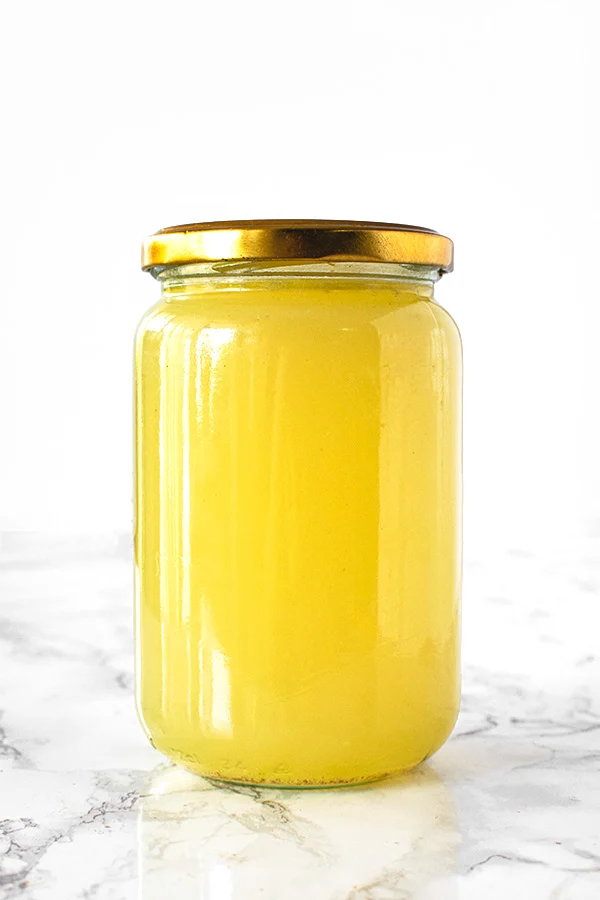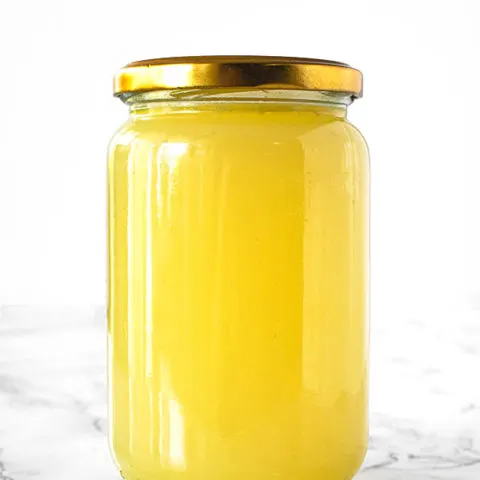Turkey stock is a great way to repurpose leftover turkey bones after Thanksgiving. It adds lots of delicious flavor to dishes.

In my family, waste is one of the gravest sins out there. This concept became even further ingrained in me when I was a waitress and a chef told me nothing goes to waste. So, I always look for ways to get the most out of all of my ingredients.
I love roasted turkey on Thanksgiving, but it always seemed like such a waste for all of those bones to get thrown out at the end of the meal.
After my family got pets, it didn't seem quite as bad because at least the bones were being enjoyed... but it still bothered me that I didn't have a better way to repurpose them.
Then, I heard of turkey stock, which can be used any way chicken stock is and makes a good turkey gravy.
It was the perfect solution, and our pets get the bones after I'm done making the stock anyway. Best of both worlds.
However, since I didn't like the long cooking time, now I make pressure cooker turkey stock, which is done in a fraction of the time.
Turkey Stock vs. Turkey Broth
Broth is usually thinner and made from turkey meat, while turkey stock is made from simmering bones for a long time.
Turkey stock is usually thicker and has a richer mouth feel from the gelatin releases from the long-simmered bones.
Adding onions, carrots, celery, bay leaves, and other herbs adds to the flavor of the stock.
What About Store-Bought Stocks and Broths?
Commercial brands tend to use the terms “stock” and “broth” interchangeably, and store-bought stocks and broths are usually more broth than stock.
They tend to be lightly flavored, lack the body of a homemade stock, and they result in a less flavorful dish.
How Stocks and Broths Are Made
Broths and stocks are also made differently.
Stocks are typically made from meaty raw bones, leftover carcasses, and meat and vegetable scraps. In the case of vegetable stock, only vegetables are used.
Stocks are simmered for several hours (unless you make pressure cooker stocks) to extract as much of the flavor from the ingredients as possible. This also extracts collagen from the bones and cartilage, which adds body and silkiness to the stock.
Broths are usually much lighter and have less body than stocks.
They're most often made from poaching meat, vegetables, and seasonings in water for as long as it takes for the meat to cook or the broth to pick up some flavor.
How Stocks and Broths Are Used
In classic French cuisine, stocks are considered to be an ingredient that's used to make other things.
Also, they're typically left unseasoned or only minimally seasoned so that they can be used in as wide a variety of ways as possible.
Stocks can be used to make soup, reduced into a sauce or a glaze, or as an ingredient in many recipes.
Broths, on the other hand, have been salted, which restricts the ways they can be used.
For the most part, broths are consumed on their own or used as a base for soups.
This definition of stocks as an ingredient and broths as a food product is the way classically trained chefs tend to think about such things in their restaurant kitchens.
What Bones Make the Best Turkey Stock?
You can use bones from a raw turkey or a roast turkey. Personally, I use bones leftover from from my roasted turkey from Thanksgiving.
Bones, backs, and necks make great stock.
Adding any fat or skin you can adds yellow color and lots of flavor. When the stock is done, the fat will float to the top when the stock cools, and you can skim it off later.
Personally, I like refrigerating the stock before removing the fat so that it solidifies, which makes it easier to remove. Instead of discarding it, I save it and use it for cooking, just like I would oil or schmaltz.
If you leave the fat on the stock, it will last longer in the refrigerator. See the fat cap section to learn why.
Adding Vegetables to Your Stock
The classic trio is a mirepoix, which consists of onions, carrots, and celery.
However, technically, you don't have to. Sometimes, it is preferable not to have the flavor of mirepoix in there.
Also, if you're using roasted carcasses, they often already have a lot of flavor by themselves.
About the Fat Cap
Lots of cookbooks advocate skimming the fat from the stock. I prefer the school of thought of letting the fat settle in a layer on top of the stock as it cools, so it acts as a protective layer over the stock.
Bacteria need oxygen to grow, so by allowing the fat to rise to the top of the stock and settle, we will create a protective barrier between the stock and the oxygen in the air above.
If you keep the fat layer on it, the fat will preserve stock longer in the refrigerator. Just lift up the layer of fat and remove the stock when you want to use it.
To store the stock in the refrigerator for up to a few weeks: every few days, bring the stock to a simmer for 10 minutes and let it cool again with the fat forming a protective layer.
How to Properly Cool Your Stock
Stock that isn't cooled properly before refrigerating can cause it to sour and become ruined.
If you put a steaming-hot stock in the fridge, it can create perfect conditions for bacteria to grow. To avoid this, let your stock cool to at least room temperature before refrigerating it.
The fastest way to cool a few quarts of stock is to strain it into a wide stockpot or bowl. The increased surface area lets it cool more quickly. To speed things up even further, fill the sink with ice water and put the stockpot in there.
How to Skim the Fat
After the stock has cooked and the pressure has come down, strain out the bones.
There’s an easy way to handle this. Let the stock cool to room temperature on your counter, then refrigerate it. The next day, there will be a cap of solidified fat at the top.
Scrape it off and do what you will with it. If you keep the fat, refrigerate it, and use it within a week.
How to Store Stock
Let the stock cool completely before refrigerating. When you are ready, pour into glass jars and refrigerate.
Stock should last a week or so in the fridge.
How to Freeze Stock
Let the stock cool completely before freezing and ladle off some of the excess fat on the surface.
Pour into a freezer safe container. Leave at least an inch of head space, allowing enough room for the liquid stock to expand as it freezes
Stock should last several months in the freezer.
Turkey Stock

Turkey stock is a great way to repurpose leftover turkey bones after Thanksgiving. It adds lots of delicious flavor to many dishes!
Ingredients
- 1 cooked turkey carcass (about 4 pounds), meat mostly removed and bones broken into large pieces
- 2 large onions, diced
- 4 stalks celery, chopped
- 4 large carrots, peeled and chopped
- 1 gallon water
Instructions
- Place the turkey bones, onions, celery, and carrots in a large stockpot. Add enough water to cover, about 1 gallon.
- Bring to a boil. Reduce heat and simmer until reduced by half, 3 to 3 ½ hours.
- Remove bones and strain stock through a fine-mesh sieve into a large bowl. Discard solids.
Nutrition Information:
Yield:
8Serving Size:
1Amount Per Serving: Calories: 64Total Fat: 2gSaturated Fat: 1gTrans Fat: 0gUnsaturated Fat: 1gCholesterol: 17mgSodium: 64mgCarbohydrates: 6gFiber: 1gSugar: 3gProtein: 6g